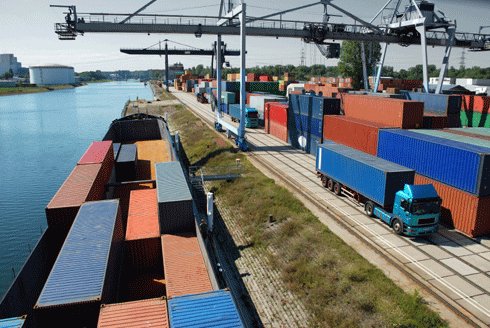
|
Published: 15 September 2014
Solar desalination a solution for Indian villages
A simple set of solar panels and a battery system connected to an electrodialysis desalination unit could provide fresh water for a typical Indian village – that’s the finding of recent research from Massachusetts Institute of Technology (MIT) in the US.

|
|
Off-grid Indian communities with salty groundwater could get potable water through the proposed solar technique. Credit:
Illustration: Christine Daniloff/MIT
|
Groundwater is more commonly salty than fresh and drinkable. For example, 60 per cent of India is underlain by salty water – and much of that area is not served by an electric grid that could run conventional reverse-osmosis desalination plants.
The analysis by MIT researchers shows that a different desalination technology – electrodialysis powered by solar panels –could provide enough clean drinking water to supply the needs of a typical village.
The study, by MIT graduate student Natasha Wright and Professor Amos Winter, appears in the journal Desalination.
Winter says finding optimal solutions to problems such as saline groundwater involves ‘detective work to understand the full set of constraints imposed by the market.’ After weeks of field research in India, and reviews of various established technologies, he says, ‘when we put all these pieces of the puzzle together, it pointed very strongly to electrodialysis’ – which is not what is commonly used in developing nations.
The factors pointing to the choice of electrodialysis in India include relatively low levels of salinity – ranging from 500 to 3000 milligrams per litre (mg/L), compared with seawater at about 35,000 mg/L – and the region's lack of electrical power. (For on-grid locations, the team found, reverse-osmosis plants can be economically viable.)
Moderately salty water is not directly toxic, but can have long-term effects on health, and its unpleasant taste can cause people to turn to other, dirtier water sources. ‘It's a big issue in the water-supply community,’ Winter says.
Most organisations working to improve clean-water access currently focus their attention on controlling known pathogens and toxins such as arsenic, Wright says. But her analysis showed the importance of ‘what the water tastes like, smells like, and looks like.’ Even if the water is technically safe to drink, that doesn't solve the problem if people refuse to drink it because of the unpleasant salty taste, she says.
By pairing village-scale electrodialysis systems – smaller than the industrial-scale units typically produced today – with a simple set of solar panels and a battery system to store the produced energy, an economically viable and culturally acceptable system could supply enough palatable water to meet the needs of a village of 2000–5000 people, Wright and Winter concluded.
The researchers estimate that deployment of such systems would double the area of India in which groundwater – inherently safer, in terms of pathogen loads, than surface water – could provide acceptable drinking water.
Both electrodialysis and reverse osmosis require the use of membranes, but those in an electrodialysis system are exposed to lower pressures and can be cleared of salt buildup simply by reversing the electrical polarity. That means the expensive membranes should last much longer and require less maintenance, Winter says.
In addition, electrodialysis systems recover a much higher percentage of the water – more than 90 per cent, compared with about 40–60 per cent from reverse-osmosis systems, a big advantage in areas where water is scarce.
The two researchers plan to put together a working prototype for field evaluations in India in January 2015. While this approach was initially conceived for village-scale, self-contained systems, Winter says the same technology could also be useful for applications such as disaster relief and for military use in remote locations.
Source: MIT News Office



